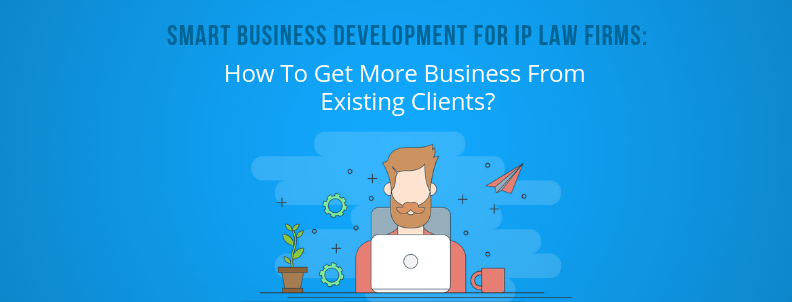This is the second article of a 3 part series on Smart Business Development Strategies for IP Law Firms which explains strategies to get more business from existing clients. The first article explains how you can spot your differentiation factor which you can read by clicking here. The third part of the article is on how to use data to build more clients for your IP law firm which you can read by clicking here.
Also, to save you from the hassle of switching between the 3 parts, we converted this whole series into one ebook so that you can read/print it later. You can download the pdf by filling this tiny form below:
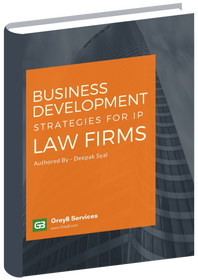
In our earlier article, we answered the question – How to craft a pitch that sets you apart from the rest?
Now the next question is whom to pitch? Or let’s put it this way: What can get us more ROI – approaching new prospects or your existing clients for more work?
I have seen this question coming up a lot in our internal discussions. I believe this is a big strategic question for every professional service which gets ignored as well. The main objective of business development is to get more work no matter whether it’s coming from a new client or from existing ones.
But before we go ahead and answer the above question, let’s have a cold hard look at a fun fact.
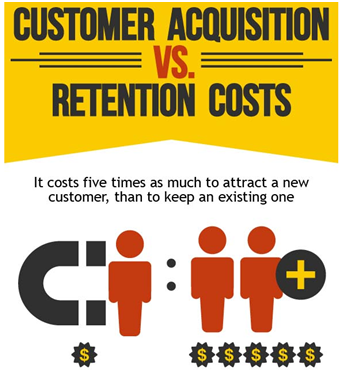
Yes, it takes five times to attract and gain business from a new client than additional business from an existing client. I’m not saying you should ignore adding new clients. What I’m saying is – your existing clients know the quality you deliver, they trust you, they have talked to you and would like to offer you more work if you suggest them ways to add more value to their business. You should not ignore them and strive to get more work.
Now the next question that many people pose after hearing this is – How to add more value?
Well, it need not be related to doing the same work that you have been doing for them. Instead, you will have to get creative and think about what other problems your existing clients are facing which can be solved through your expertise.
In today’s brief time together, we’ll discuss how you can go about it. Let’s get started.
How to use Differentiation to Increase Business from Existing Clients?
Let’s consider for instance Client A. He files 500 applications in a year but takes your help in filing 150 applications only. He gives 350 applications to other law firms. Since you are his existing vendor, your chances of getting those remaining applications may be higher than others.
To get the details of all the law firms and attorneys handling the remaining 350 applications, you can use an analytics tool like Examiner Analysis.
Examiner Analysis tool not only gives you details of the clients but also reveals grant rates, no. of office actions and similar other statistics of the law firms.
PS: By grant rates above I mean how many patent applications they can get through an examiner desk.
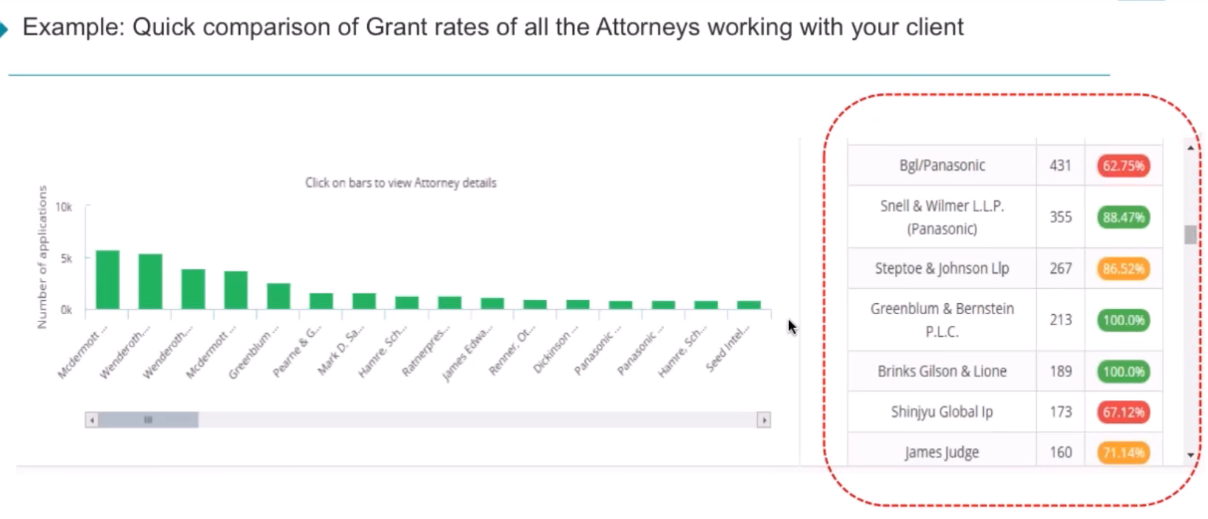
While working with different patent counsels at many Fortune 500 companies, I discovered that IP Counsels try to have multiple law firms working on their patent applications. This helps them in maintaining competition and averting chances of getting stuck with a single law firm. IP Counsels, however, don’t track the above metrics – grant rate, no. of office actions, et cetera.
As a result, even if you perform way better than a top law firm under a particular art unit, there are fair chances that you may not be getting all the applications filed by client A in that art unit. However, if you showcase to client A that- “Look at the data, we do way better than others in these art units and can save your time and money by this amount due to fewer office actions and higher grant rate”, you, for sure, will increase your chances to get more business from him.
Hence, rather than hunting new clients, first, look at your existing clientele and figure out ways – using data – how you are better than others and get more work because you deserve that.
Another Business Development Strategy You must explore: An Unconventional Business Development Strategy For IP Law Firms
Why Differentiating yourself is important more than ever today?
Before we proceed ahead, I have one question for you.
Do you actually face a problem differentiating yourself when you talk to your client? Do you have a clear differentiating factor reinforced by your experience and skills?
Well, the problem the attorney world is currently facing is of commoditization where every attorney is skilled and every law firm is better. Hence, most of them face problems when it comes to differentiating themselves. The number of years used to be a great differentiating factor, but now we live in a world where we are drowning in a sea of information and data. This, to a great extent, has decreased the value of no. of years of experience as a differentiating factor by several folds.
Today, an attorney with 20 years of experience may face problems in differentiating himself from his colleague with 10 years of experience. What matters today is how they work as both can do the same work.
The situation becomes tough when you try charging high only on the basis of your experience. You can’t do that anymore. It was possible in the past but not in current times. The startup culture where the upstarts are disrupting juggernauts has played a fine role in ingraining this philosophy everywhere.
What you have to do is you have to give them enough facts and reasons to select you. And that means having some factual data to show them. This is one of the strategies that can be used by law firms. You can work on this to get more work from the existing clients.
I’ve also shared another strategy below on a similar line.
A strategy to increase business from your existing clients by showcasing your differentiating factor
We have discussed the importance of differentiating factors and why you should get more work from your existing clients. Now I’ll walk you through a strategy which if you implement can help you fetch more business.
Once I was once talking to one particular client who had a patent under the prosecution stage. I found the application was being handled by a tough examiner who belongs to an Art Unit with a low grant rate. Thus, there were high chances of the patent not receiving a grant.
You must have been under such a situation in the past where a particular examiner proved to be a tough nut to crack.
What to do in such a situation?
Worry not as we have the solution.
What you can do here is consult your client and let him know that you have access to a platform – Examiner Analysis (Click here to start your free Trial) – that on the basis of historical analysis on how patents are classified into different art units can help you know where your application may go. You can also let them know that the platform can let you know the grant rates of these art units.
After that, you can take a few patent applications and run them through Examiner Analysis. This will help give an idea to your client how a patent application gets classified and get assigned to an art unit.
An application gets assigned to an art unit based on specific keywords. Now you can consult your client and tell him, “ If I make these changes in the draft of the patent and replace these keywords with these, it may go into this art unit which has a grant rate way better than the one in which it was previously headed to.”
Let me help explain this with an example.
Suppose you picked an application with keywords that were taking it to TC3622. Now TC3622 is unpopular for its low grant rate. You, in the next step, figure out, let say, that if you change marketing to merchandise, the application may get redirected to TC2654 or TC2145.
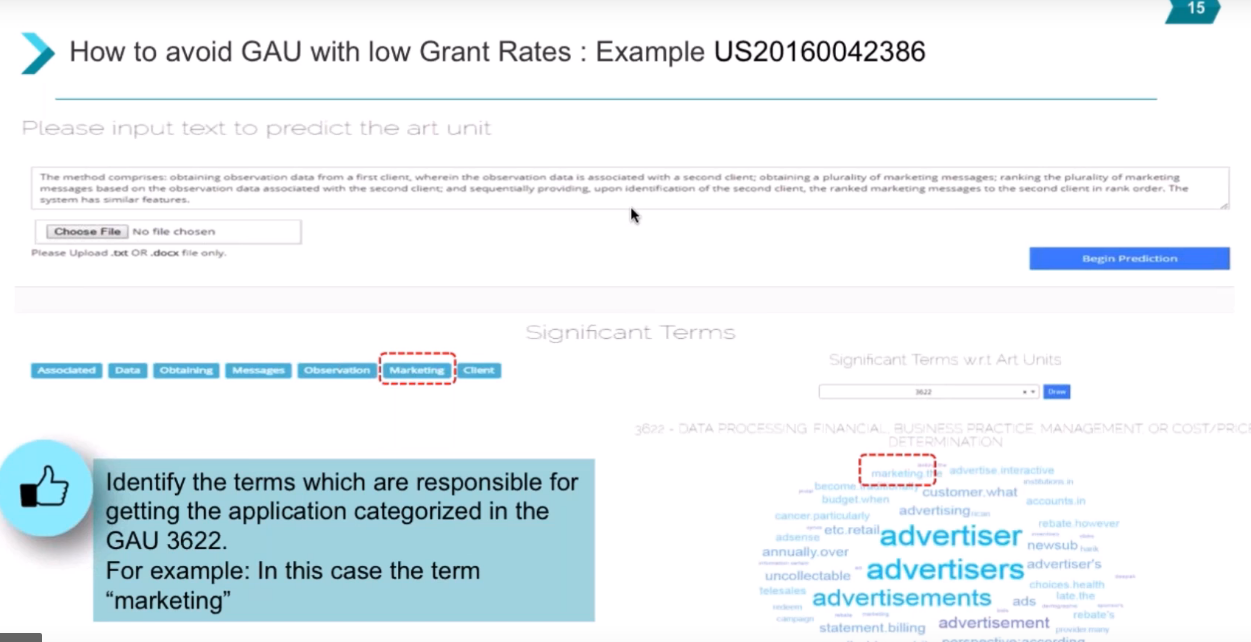
Now, these two art units have an 80% grant rate as compared to the previous art unit which had only 56% grant rate. That is a big difference. These skills, again, differentiate you from all the others who are using the traditional way of patent prosecution.
You have got a smart way to prosecute the patent. Also, I can assure you that IP counsel will love to have this as one of their KPI (Key Performance Indicator) – how they can reduce the patent prosecution cost or increase the grant rate of a number of applications that can get granted.
Offering such a solution can increase your chances of being hired as compared to others by multifold. A problem solver is a ubiquitous requirement. Everyone wants to work with people with intelligent and innovative solutions to their problems. Someone who doesn’t take decisions just on the basis of his experience, but takes into account data and can figure out what could happen next.
What is the next step?
To help you implement these strategies with ease, you may need access to GreyB’s Examiner Analysis tool. You can get free access to one month of the tool by signing up here: Click Here to Start Using Examiner Analysis Today.
Authored by: Deepak Syal, Director, Operations.

